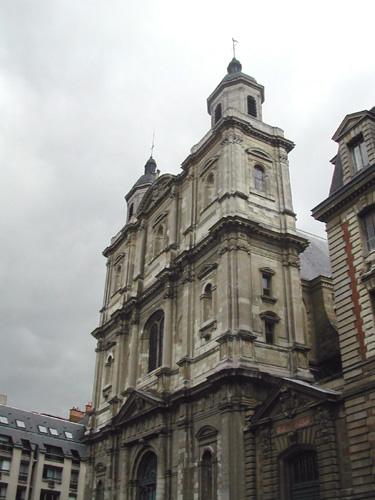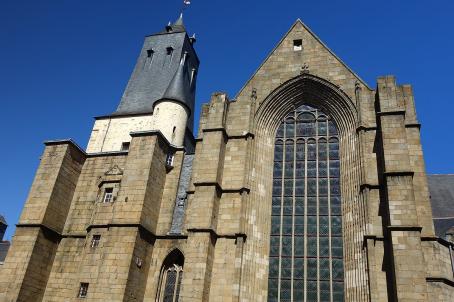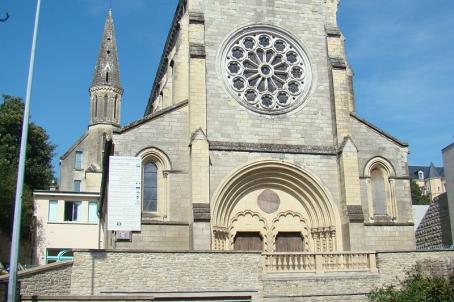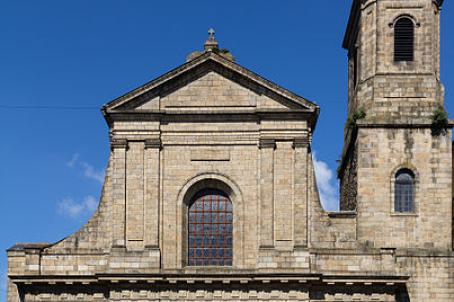Church of Toussaints
The Toussaints church is a parish church in Rennes located south of the Vilaine river, in baroque counter-reform style. The present church replaces the old Toussaint church which was located on the site of the present Halles further west. The first stone was laid on 16 July 1624 by the bishop of Rennes.
About this building
Built between 1625 and 1651 according to the plans of the architects of the Society of Jesus, the church of Toussaints reveals the taste of the Counter-Reformation for the addition of columns, pilasters and pediments on the façade. It has preserved three Laval altarpieces inside. The church is composed of a nave ending in an apse with cut-off sides and has two side aisles and a transept. It is entered on the west side through a monumental portal. It is surmounted by two towers. The back of the choir is decorated in 1653 with an altarpiece first attributed to Charles Trumel.






